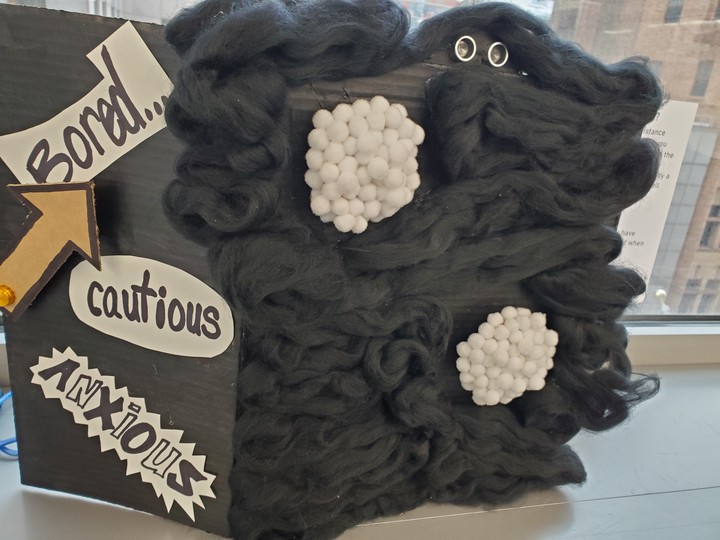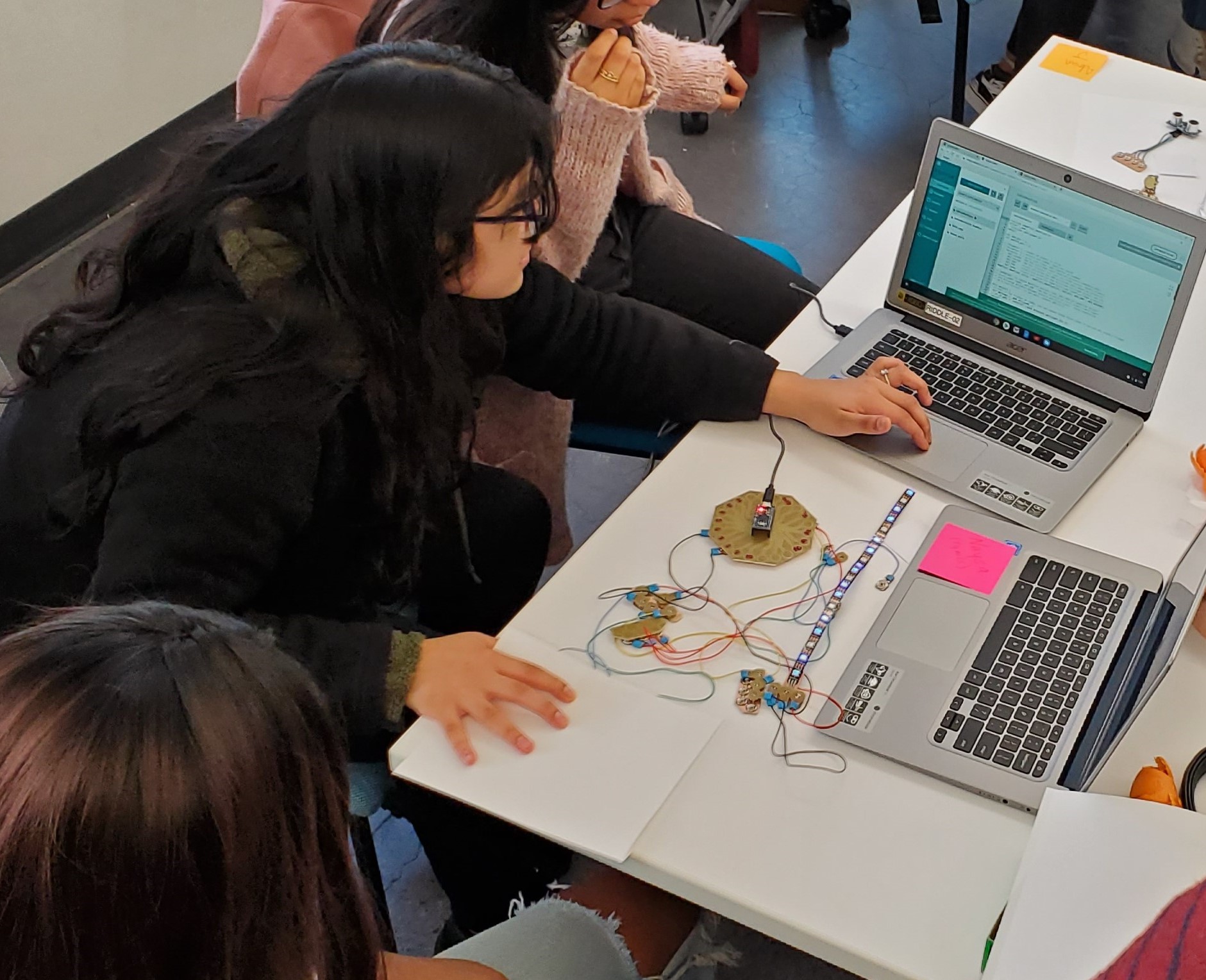Computational Murals

Overview
The project explores the co-design of artistic computing curriculum with visual and literary artists. The effort is a collaboration with the non-profit organization Community Word Project, which is an “arts-in-education organization that inspires children in underserved communities to read, interpret and respond to their world and to become active citizens through collaborative arts residencies and teacher training programs”. The organization aims at supporting their learners to use poetry, visual art, and music as platforms to amplify their voices. The researchers have been working with the organization and their artists for the past year to explore the potential of integrating computational media as an additional platform for expression. The work has resulted in two participatory design sessions with students and artists, which has led to the launch of CWP 2.0–a 12-week program for high school students to create physical and digital computational murals using processing ( p5js ) and the Arduino. The students engage in developing a collaborative line of poetry and currating a portfolio of photography, as they learn about both the physical and digital forms of computing to create their murals.

Research Questions Explored
The project explores research questions spanning the design of learning activities and computational platforms to support learners and educators in these interdisciplinary spaces.
- How can we design learning environments that enable learners to use computational media as a platform for expression?
- How can the design of physical computing platforms and programming environments support the processes of ideation, iteration, and development of murals?
- What are the affordances for expression the digital and physical forms of expression?
- What pedogogical supports are important for supporting the design and development of physical and digital murals?
- What values emerge in the learning environment as learners engage in development of their collaborative computational murals?
- How do we support collaboration between learners to make decisions across their poetry, photography, coding and electronics in ways that align with their goals for expressivity?
- How can the design of activities, pedagogical supports, and technology promote engaging across the disciplines?
- How can we support collaboration in the ideation, iteration, and development phases of the students’ artistic artifacts?
Research Team
The research has been conducted in partnership with the Community Word Project organization and the researchers at NYU.
- CWP Leads:
- David King - Program Director of School & Community Partnerships
- Elizabeth Leonard - Poet and Teaching Artist
- Michele Kotler - Executive Director and Founder
- Nichelle Ryan - Photographer and Teaching Artist
- Leigh Wells - Deputy Director of Programs & Operations
- NYU Leads:
- Juan Pablo Sarmiento - PhD Student in Educational Communication and Technology
- Eunice Lam - MS Student in Digital Media Design for Learning
- Dr. Kayla DesPortes - Assistant Professor of HCI and the Learning Sciences
- Previous Collaborators:
- Zahra Humaira - MS in Digital Media Design for Learning
- Mengqiu Chen - MS in Digital Media Design for Learning
- Jack Lu - MS in Digital Media Design for Learning
- Eunyoung Jeon - MS in Digital Media Design for Learning